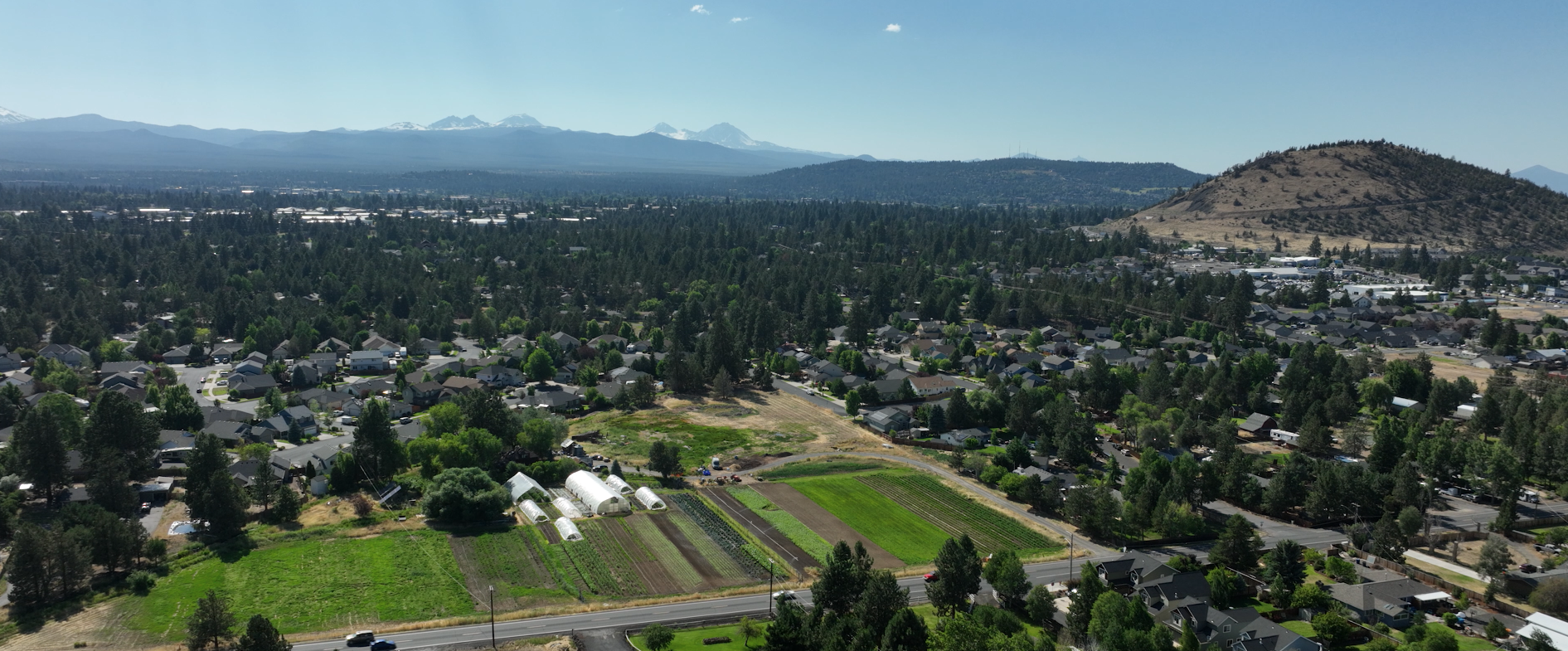A New Tree Code Built on Compromise
Growing Bend’s Urban Forest While Building Needed Housing
Bend was just recognized in a data-driven piece on urban tree cover in The Washington Post, Which cities have the most trees? Why some U.S. cities are so much greener than others, as a U.S. city that has managed to pull off a slight increase in tree cover.
As journalist Niko Kommenda notes, this has happened in spite of development pressure and a changing climate. Will Bend’s newly adopted tree code help ensure this upward trajectory continues?
A Quick Look Back
After a year of collaborative work by a diverse group of stakeholders that made up Bend’s Tree Regulation Update Advisory Committee (TRUAC), the Bend City Council adopted a new tree code, which went into effect in August 2024, that aims to protect more trees—especially large, mature trees—during development, without hindering the production of much-needed housing.
“That committee produced a recommended policy that was a compromise between all sides… At our final hearing, Council then made further changes to the code based on feedback from the development community. We did not ignore requests to compromise, and the code is reasonable and balanced.”
Where Things Stand—and What’s Next
Legal Challenges to the Code
The City’s primary objective—and TRUAC’s guiding mission—was to strike a careful balance: protect trees without obstructing housing production using clear, objective code. Many involved in the process believe that goal was achieved.
However, some developers claim the opposite. A series of legal challenges have argued that the tree code is not clear and objective, and discourages needed housing production through unreasonable cost and delay. Notably, many of those now challenging the code were part of TRUAC and helped to shape the code, but say their concerns and suggestions were not given adequate consideration.
The first suit, brought by Pahlisch Homes and others, was withdrawn in January after representatives from the City and development community began to clarify how data-driven evaluation would inform the annual code reviews.
More recently, a new challenge to the tree code was brought forward by Larry Kine, a developer of both affordable and market-rate housing. A hearing was held on April 8, 2025, and LandWatch submitted comments in support of the new tree code and the process behind it. A decision from the hearings officer is expected in late May. We’ll continue monitoring this closely and urging the City to enforce the Bend Development Code and tree preservation standards while approving housing developments that meet these standards.
Looking Ahead: A Balanced, Data-Driven Code Review
It’s clear that sound, transparent data must remain central to the process of implementing and evaluating the new tree code. The only way to assess whether the code is achieving its goals – preserving more trees while enabling housing production – is to allow it to run, gather evidence, and refine accordingly.
The Bend City Council has committed to annual code reviews. Until these data-driven reviews are completed and any adjustments are negotiated, it’s critical the City ensures development complies with the code as it’s written.
Source: City of Bend
What to Expect from the One-Year Tree Code Review
This fall, the City is expected to present initial data on how developers are using the new tree preservation options and incentives. This review will help determine whether the code is meeting both community and Council objectives. We anticipate this including research on best practices for incentivizing tree preservation, analysis of how the code has affected housing development, and a schedule for ongoing review and code implementation improvements.
At the same time, developers will likely bring forward their own findings—including data on added cost to development, the code’s effect on housing production, and whether public right-of-way requirements and mitigation measures have influenced project feasibility.
This collective data will help inform future refinements to the code. While significant changes aren't expected, any updates will need to uphold the delicate balance the current policy strives to maintain. If changes are made to support housing production, they must be matched with changes that strengthen protections for our tree canopy.
It’s also worth noting: the code was designed to be incremental. TRUAC heard early on that many existing developments could have met the new standards even before they were adopted.
Encouraging Steps Toward Tree Preservation Beyond the Code
Bend’s new tree code is just one part of a larger effort toward better urban forestry. Here are some additional promising updates:
The City’s first Urban Forester has been hired. This new role will lead efforts to create a long-term urban forest management program, including citywide tree mapping, a tree inventory, and a planting plan for equitable canopy coverage. The forester will also help secure grants to fund this work.
City Council draft goals show a clear commitment to advancing an urban canopy strategy.
Updates to street and engineering standards are in motion, creating more space and flexibility for tree preservation in the right-of-way..
Staying Engaged
Central Oregon LandWatch will remain actively engaged in this process. We’re advocating for a data-driven approach that ensures the code continues to support both streamlined housing development and the health of our urban forest.
We’ll share opportunities that arise for you to speak up — be sure you’re signed up to receive LandWatch’s updates and action alerts. Until then, you can rely on us to review development application compliance with tree preservation plans, collaborate with stakeholders to evaluate how the code is working, and defend the code as adopted.






